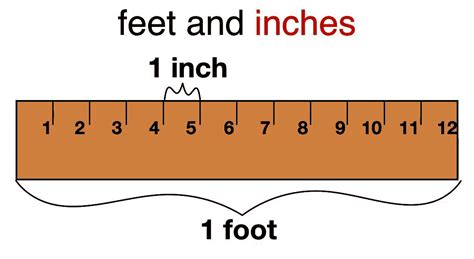How Many Feet Is 400 Inches
Kalali
Apr 05, 2025 · 4 min read

Table of Contents
How Many Feet is 400 Inches? A Comprehensive Guide to Unit Conversions
Converting units of measurement is a fundamental skill in various fields, from everyday life to complex scientific calculations. One common conversion involves inches and feet, particularly useful in construction, design, and various DIY projects. This comprehensive guide will delve into the conversion of 400 inches to feet, exploring the method, providing real-world examples, and touching upon related unit conversions. We'll also discuss why understanding these conversions is so important.
Understanding the Relationship Between Inches and Feet
Before diving into the conversion of 400 inches, let's establish the fundamental relationship between inches and feet. The imperial system of measurement, prevalent in the United States and parts of the United Kingdom, defines:
- 1 foot (ft) = 12 inches (in)
This means that one foot is equivalent to twelve inches. This simple relationship is the key to all inch-to-foot conversions.
Calculating 400 Inches to Feet: The Simple Method
Converting 400 inches to feet is a straightforward process using the established relationship. We can apply a simple division:
400 inches / 12 inches/foot = 33.33 feet
Therefore, 400 inches is equal to 33.33 feet.
Understanding the Decimal Result: Feet and Inches
The result of 33.33 feet presents a slight complication. While 33 feet is a whole number, the .33 represents a fraction of a foot. To convert this decimal portion back into inches, we perform the following calculation:
0.33 feet * 12 inches/foot = 3.96 inches
So, a more precise representation of 400 inches is 33 feet and 3.96 inches. Rounding to the nearest inch gives us 33 feet and 4 inches.
Practical Applications: Real-World Examples
Understanding inch-to-foot conversions is crucial in numerous real-world situations. Here are some examples:
-
Construction and Home Improvement: Imagine you're building a fence. If the plans specify a fence section that is 400 inches long, you'll need to convert this to feet to purchase the correct amount of lumber. Understanding that 400 inches equates to roughly 33 feet and 4 inches is vital for accurate material estimations.
-
Interior Design: When designing a room, you might be working with measurements in inches, but furniture dimensions are often listed in feet. Converting between these units ensures accurate placement and arrangement of furniture.
-
Sewing and Tailoring: In garment construction, patterns are often provided in inches, but finished garment dimensions might be considered in feet. Precise conversion is essential for creating well-fitting clothing.
-
Engineering and Manufacturing: Many engineering and manufacturing processes involve precise measurements, requiring accurate conversion between inches and feet to ensure the proper functioning of components and machinery.
-
Cartography and Surveying: Maps and land surveys frequently utilize measurements in both inches and feet. Converting between these units is necessary for accurate calculations and representation of distances.
Beyond the Basics: Converting Other Units
While our primary focus is 400 inches to feet, understanding related unit conversions expands your skills. Here are some relevant conversions:
-
Inches to Yards: Since 1 yard equals 3 feet, you can easily convert inches to yards by first converting inches to feet and then converting feet to yards. For 400 inches, this would be: 33.33 feet / 3 feet/yard = 11.11 yards.
-
Feet to Miles: Knowing that 1 mile equals 5280 feet allows for conversion between feet and miles. 400 inches would be approximately 0.063 miles (33.33 feet / 5280 feet/mile).
-
Metric Conversions: While the focus has been on the imperial system, you might also encounter the need to convert inches and feet into metric units like centimeters and meters. Recall that 1 inch is roughly 2.54 centimeters.
Importance of Accurate Conversions
Accuracy in unit conversion is paramount. Incorrect conversions can lead to significant errors in various applications. In construction, an inaccurate measurement could result in structural instability. In manufacturing, an incorrect conversion can cause malfunctioning machinery. In design, an inaccurate conversion can render a product unusable. Always double-check your calculations and use appropriate tools to ensure precision.
Using Calculators and Online Tools
While manual calculation is valuable for understanding the process, using calculators and online conversion tools can streamline the process and minimize errors, especially for more complex conversions. Many free online converters provide instant conversions between various units of measurement, including inches and feet. These tools are particularly helpful for large-scale projects.
Conclusion: Mastering Inch-to-Foot Conversions
The conversion of 400 inches to feet, resulting in approximately 33 feet and 4 inches, is a fundamental skill with broad applications. Understanding this conversion and related unit conversions is essential for accuracy and efficiency in various fields. By mastering these conversions and utilizing available tools, you can confidently tackle projects that require precise measurements and calculations. Remember to always double-check your work to minimize errors and ensure successful outcomes. Whether you're building a house, designing a garment, or simply measuring a room, accurate unit conversions are crucial for success. The knowledge gained from this guide will equip you with the skills to approach these conversions with confidence and precision.
Latest Posts
Latest Posts
-
How Many Cups Is 200 Ml Water
Apr 05, 2025
-
Cuanto Es El 20 De 400
Apr 05, 2025
-
Como Sacar El Porcentaje De Una Diferencia
Apr 05, 2025
-
Explain Why Metabolism In Organisms Depends On Water
Apr 05, 2025
-
What Is 6 Cm In Mm
Apr 05, 2025
Related Post
Thank you for visiting our website which covers about How Many Feet Is 400 Inches . We hope the information provided has been useful to you. Feel free to contact us if you have any questions or need further assistance. See you next time and don't miss to bookmark.
